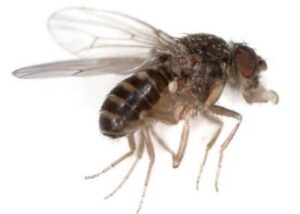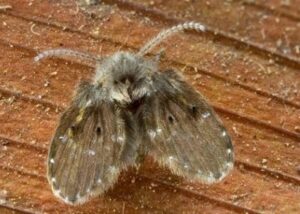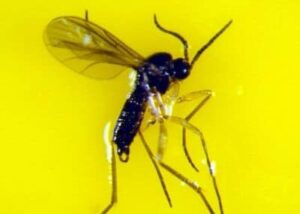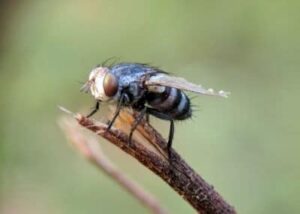There are different kinds of flies within this species with the ordinary house fly the most common type. House flies, like the other species, are relatively small in size but can be pretty big in peskiness. As an adult, they reach between ⅛” to ¼” in length with females being larger than their male counterparts. They are typically gray in color, with reddish-eyes, sponging mouthparts and having four narrow black stripes between their necks and abdomen (their “thorax”). The house fly’s feeding and breeding habits, along with its persistence for invading homes and feeding on human food, enable the house fly to spread intestinal diseases such as dysentery and diarrhea.
Other common small filth flies we most commonly see in our Florida/Southern region are the Fruit Fly (red or dark-eyed), Drain (Moth) Fly, Phorid (Humpback) Fly and Fungus Gnat.
Fruit flies are small pests that are commonly found in homes, restaurants, and other facilities where food is processed. They are found on decaying matter, especially fruits and vegetables, that have been stationary for several days. These small oval-shaped flies are tan in color and a potential health concern, especially when present in health facilities.

The Drain or Moth fly have short hairy bodies and dark wings which resemble those of a moth. They have long antennae, wings that are leaf shaped and when at rest, they are held roof like over their body. These flies breed in decomposing organic material, such as moist plant litter, garbage, sewage, and around kitchen or bathroom sinks where there is standing water.

Phorid flies are also referred to as Humpbacked flies because their small head and arched thorax gives them a humpbacked appearance. Most are black or dull brown but some are yellowish in color. These flies are often mistaken for gnats because they are very small – between 1/64” to 1/1” in length. Adult phorid flies have a peculiar habit of rapidly running across windows, TV screens, tables, walls and plan foliage. They feed on many types of substances but develop in moist areas where organic material and standing water are present.

The Fungus Gnat is about 1/8” to 1/10” long, grayish to black, slender, mosquito-like, with long legs, antennae and one pair of wings. They can be identified by the vein patterns in the wings which are Y shaped and adults have eyes that meet above the base of the antennae. These gnats become a nuisance pest indoors when adults emerge in large numbers from potted plants with over-watering or poor drainage systems create ideal breeding sits of fungus gnats. They can also survive indoors in damp, new construction materials and in areas near leaky roofs or water pipes.








